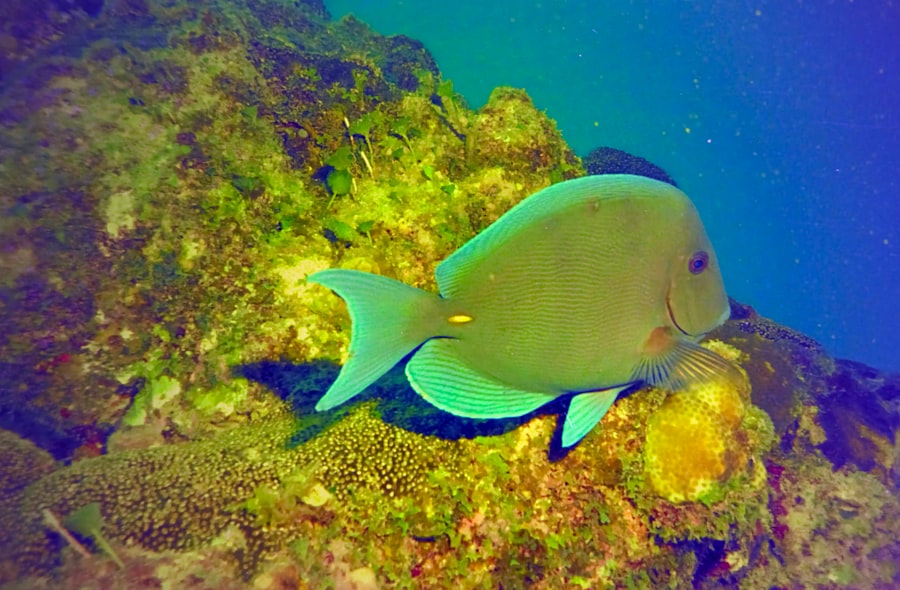Download links
How to install Discover the Wonders of Shallow Sea Diving APK?
1. Tap the downloaded Discover the Wonders of Shallow Sea Diving APK file.
2. Touch install.
3. Follow the steps on the screen.
Description
Shallow sea diving offers a unique and enchanting experience that captivates both novice and seasoned divers alike. Unlike deep-sea diving, which often requires extensive training and specialized equipment, shallow diving allows individuals to explore vibrant underwater landscapes with relative ease. The allure of shallow waters lies in their accessibility; divers can often enjoy these experiences without the need for heavy gear or extensive preparation.
The gentle waves and sunlit waters create a serene environment, making it an ideal setting for those looking to connect with nature in a more intimate way. The visual splendor of shallow sea diving is nothing short of breathtaking. Coral reefs, teeming with life, are often found in these depths, showcasing a kaleidoscope of colors and forms.
The interplay of sunlight filtering through the water creates a magical ambiance, illuminating the diverse marine flora and fauna.
This vibrant ecosystem not only provides a feast for the eyes but also serves as a reminder of the intricate relationships that exist within marine environments.
Key Takeaways
- Shallow sea diving offers breathtaking views of colorful marine life and vibrant coral reefs
- Exploring shallow water marine life allows divers to encounter a diverse range of species, from tiny seahorses to majestic sea turtles
- Tips for safe and enjoyable shallow sea diving include proper equipment maintenance, staying within depth limits, and being mindful of marine life
- Shallow sea diving is an ideal starting point for beginners, offering a less intimidating environment and easier access to training and certification
- Conservation and preservation of shallow water ecosystems is crucial for maintaining the delicate balance of marine life and protecting these valuable habitats
- Popular shallow sea diving destinations around the world include the Great Barrier Reef in Australia, the Red Sea in Egypt, and the Caribbean Sea in Mexico
Exploring Shallow Water Marine Life
Critical Habitats for Marine Biodiversity
Coral reefs, seagrass beds, and rocky shorelines serve as critical habitats for countless species, making them prime locations for divers seeking to witness marine biodiversity up close.
Adaptability of Marine Species
One of the most fascinating aspects of shallow water marine life is the adaptability of various species to their environments. For instance, clownfish have developed a symbiotic relationship with sea anemones, providing protection for themselves while offering the anemones nutrients from their waste. Similarly, parrotfish play a crucial role in maintaining coral health by grazing on algae that can otherwise overwhelm coral reefs.
Preserving Delicate Environments
Observing these interactions firsthand can deepen one’s appreciation for the complexity of marine ecosystems and highlight the importance of preserving these delicate environments.
Tips for Safe and Enjoyable Shallow Sea Diving

While shallow sea diving is generally considered safe, it is essential to adhere to certain guidelines to ensure a pleasurable experience. First and foremost, divers should always be aware of their surroundings and understand the local conditions before entering the water. Factors such as tides, currents, and weather can significantly impact visibility and safety.
It is advisable to check local dive reports or consult with experienced divers or dive shops to gain insights into current conditions. Another critical aspect of safe diving is proper equipment usage. Even in shallow waters, divers should wear appropriate gear, including a well-fitting mask, snorkel, fins, and a wetsuit if necessary.
A buoyancy control device (BCD) can also enhance safety by allowing divers to maintain neutral buoyancy while exploring underwater. Additionally, divers should practice good buddy communication; having a dive partner not only enhances safety but also enriches the experience through shared exploration and discovery.
The Benefits of Shallow Sea Diving for Beginners
| Benefits of Shallow Sea Diving for Beginners |
|---|
| 1. Opportunity to explore marine life |
| 2. Low risk of decompression sickness |
| 3. Less intimidating for beginners |
| 4. Easier to control buoyancy |
| 5. Accessible for most people |
Shallow sea diving serves as an excellent introduction to the world of underwater exploration for beginners. The relatively calm conditions found in shallow waters make it easier for novice divers to acclimate to being submerged while minimizing anxiety associated with deeper dives. This environment allows beginners to focus on developing essential skills such as equalization, buoyancy control, and navigation without the added pressure of depth-related challenges.
Moreover, shallow diving provides ample opportunities for learning about marine ecosystems and conservation efforts. Beginners can engage in guided dives led by experienced instructors who can impart valuable knowledge about local marine life and environmental stewardship. This educational aspect not only enhances the diving experience but also fosters a sense of responsibility towards protecting fragile underwater ecosystems.
As beginners gain confidence and knowledge through shallow diving experiences, they may be inspired to pursue further training and exploration in deeper waters.
Conservation and Preservation of Shallow Water Ecosystems
The conservation of shallow water ecosystems is paramount in ensuring the health and sustainability of marine environments. These areas are often more vulnerable to human activities such as pollution, overfishing, and coastal development. As divers explore these beautiful underwater landscapes, they become ambassadors for conservation efforts, raising awareness about the importance of protecting these ecosystems.
Engaging in responsible diving practices—such as avoiding contact with coral reefs and refraining from disturbing marine life—can significantly contribute to the preservation of these habitats. Organizations dedicated to marine conservation often rely on divers to assist in monitoring and protecting shallow water ecosystems. Citizen science initiatives encourage divers to collect data on marine species populations, water quality, and habitat conditions.
This information is invaluable for researchers working to understand the impacts of climate change and human activity on marine environments. By participating in these efforts, divers not only enhance their own experiences but also contribute to broader conservation goals that benefit future generations.
Popular Shallow Sea Diving Destinations around the World

Shallow sea diving offers an unparalleled opportunity to explore some of the most breathtaking ecosystems on the planet. From vibrant coral reefs to diverse marine life, numerous destinations around the globe are renowned for their exceptional shallow sea diving opportunities.
Iconic Dive Sites
The Great Barrier Reef in Australia stands out as one of the most iconic locations for divers seeking vibrant coral reefs and diverse marine life. With its crystal-clear waters and abundant biodiversity, this UNESCO World Heritage site offers countless dive sites suitable for all skill levels.
Caribbean and Southeast Asian Hotspots
Another remarkable destination is the Caribbean Sea, where islands such as Bonaire and Cozumel boast stunning shallow dive sites rich in marine life. Bonaire’s marine park is famous for its easy shore diving access, allowing divers to explore vibrant reefs just steps from the beach. Cozumel’s Palancar Reef offers breathtaking underwater landscapes filled with colorful fish and intricate coral formations. In Southeast Asia, Thailand’s Koh Tao is celebrated for its clear waters and thriving marine life, making it a popular spot for beginner divers.
Idyllic Dive Sites and Conservation Efforts
The Maldives offers idyllic shallow dive sites surrounded by pristine atolls teeming with life. The combination of warm waters, vibrant coral reefs, and abundant marine species makes these destinations ideal for those seeking both adventure and relaxation. Shallow sea diving presents an extraordinary opportunity to connect with nature while exploring some of the most beautiful ecosystems on our planet. As divers immerse themselves in these underwater worlds, they not only experience the thrill of discovery but also gain a deeper understanding of the importance of conservation efforts aimed at preserving these fragile environments for future generations.
If you are interested in shallow sea diving, you may also want to check out the article Perspektif Pangingisda di Indonesia which discusses the perspective of fishing in Indonesia. This article provides insights into the fishing industry in Indonesia and how it relates to shallow sea diving. It offers a unique perspective on the benefits and challenges of fishing in Indonesian waters.
FAQs
What is shallow sea diving?
Shallow sea diving refers to diving in relatively shallow waters, typically up to 40 feet deep. It is a popular form of diving for beginners and recreational divers due to the relatively low depth and clear visibility.
What can you expect to see while shallow sea diving?
While shallow sea diving, you can expect to see a variety of marine life such as colorful fish, coral reefs, sea turtles, and other fascinating underwater creatures. The clear waters of shallow seas provide excellent visibility for observing marine life.
What are the safety considerations for shallow sea diving?
Safety considerations for shallow sea diving include proper training and certification, checking equipment for proper functioning, monitoring air supply, and being aware of potential hazards such as currents and marine life. It is important to dive within your limits and always dive with a buddy.
What equipment is needed for shallow sea diving?
The basic equipment needed for shallow sea diving includes a mask, snorkel, fins, wetsuit or rash guard, buoyancy control device (BCD), regulator, dive computer, and a weight system. It is important to ensure that all equipment is properly maintained and in good working condition.
What are some popular shallow sea diving destinations?
Popular shallow sea diving destinations include the Caribbean, the Red Sea, the Great Barrier Reef in Australia, and the Maldives. These locations are known for their clear waters, diverse marine life, and beautiful coral reefs, making them ideal for shallow sea diving.





